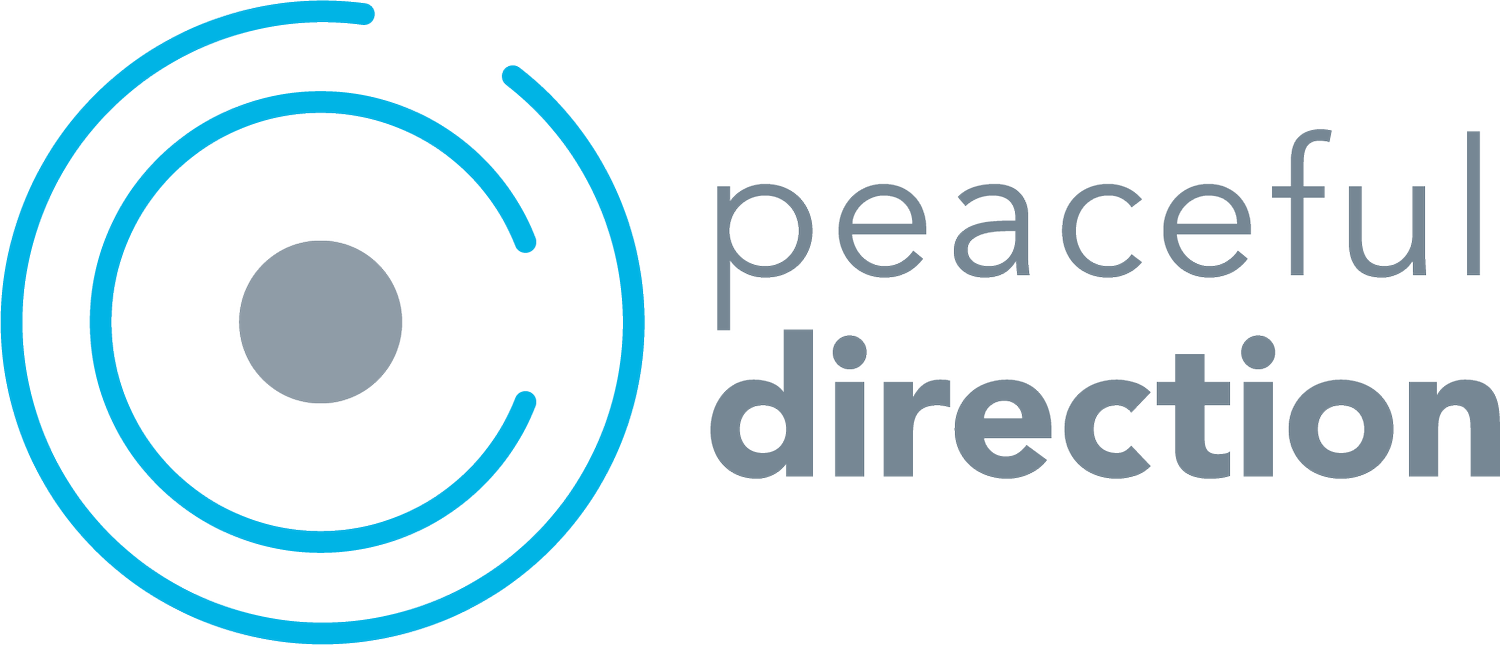My coaching origin story
“So, how did you become a coach?”
I’m quite sure I’ve answered this question hundreds of times, for prospective clients and fellow coaches alike. The answer is a story that brings me joy to this day. And it starts a good number of years before my decision to take the big leap, leave full-time employment and focus on Peaceful Direction.
Back then, I was in charge of the communications operation at a large international nonprofit. It felt, very briefly, like hitting the jackpot of jobs.
I had friends who worked there. My parents were donors when I was a kid. The mission was aligned with my own sense of how the world should be. I had a breathtaking span of control: more than 100 employees, a budget in the double-digit millions and multiple offices across the country. In short, I thought I had arrived. In my late 30s at the time, I figured I would someday retire from that position – for which I had left my favorite job and my favorite boss.
And in fairly short order, I realized I was drowning.
I had 45-50 meetings a week on average, most of which were in my office or just down the hall. From school dropoff to daylight savings, I didn’t see the sun on a lot of days. The pressure to keep up with demands from internal stakeholders was intense. Turnover was high. We lurched from crisis to crisis without adhering to any kind of overall vision, either within my team or at the very top. I came home exhausted a lot of nights, wondering: what impact I was actually having toward the mission of the organization?
I’d been talking a fair amount with our chief operating officer at the time, who was my strongest ally on the executive team despite not being my boss. She knew a lot about mission, impact and effectiveness. During one of these conversations, I learned that she was going through coaching school at Georgetown University. I didn’t know what coaching was at the time, but I knew it must be meaningful if it was worth her effort. (She would take a few days a month off to go to class and do the course work, all while working a demanding job and commuting halfway across the country home on weekends.)
So I asked the COO to introduce me to a few of her classmates, with an eye toward hiring one of them as my coach. I had an immediate connection with one and signed on for a six-month engagement. I was her second-ever paying client, as she was beginning to navigate her exit from corporate America into a private coaching practice. She was in a different state, and Zoom didn’t exist yet. So I’d come home from work once every other week, plop down on the sofa and call her on the phone.
What we achieved together in fairly short order was a transformation in my thinking. She got me to understand the distinction between my stuff – things we all carry, like blind spots, obstacles and limitations – and the institutional stuff. In one category was what I could change. In the other was almost like gravity or the laws of physics. Not worth trying.
My coach had patience. She had presence. She had a unique ability to connect the dots of my situation in ways that I was missing. I felt heard and supported but also challenged.
With her help, I began the process of preparing myself mentally to exit the nonprofit. Months later, I went back to the favorite former employer in a new position and laid down all of the struggles that had led to the change. I never forgot what coaching made possible for me as the client, and I later jumped at my first opportunity to go through the Georgetown program myself.
Flash forward a few years, and my former coach is still a mentor. She’s also the founder of a thriving coaching business that brings on other coaches for large engagements… including this guy!
Coaching is the connection between my painful moment on the growth edge years ago and my present day: doing work that is uniquely mine, tangibly impactful and nearly crisis-free. I’m a believer in the transformative power of coaching because I lived it myself before bringing it to others.
(Special thanks to Laura Maloney and Jessica Bronzert for their initial roles in this story, and for continuing to provide support and inspiration nearly a decade later.)
Image: Pablo Carlos Budassi, CC BY-SA 4.0, via Wikimedia Commons
